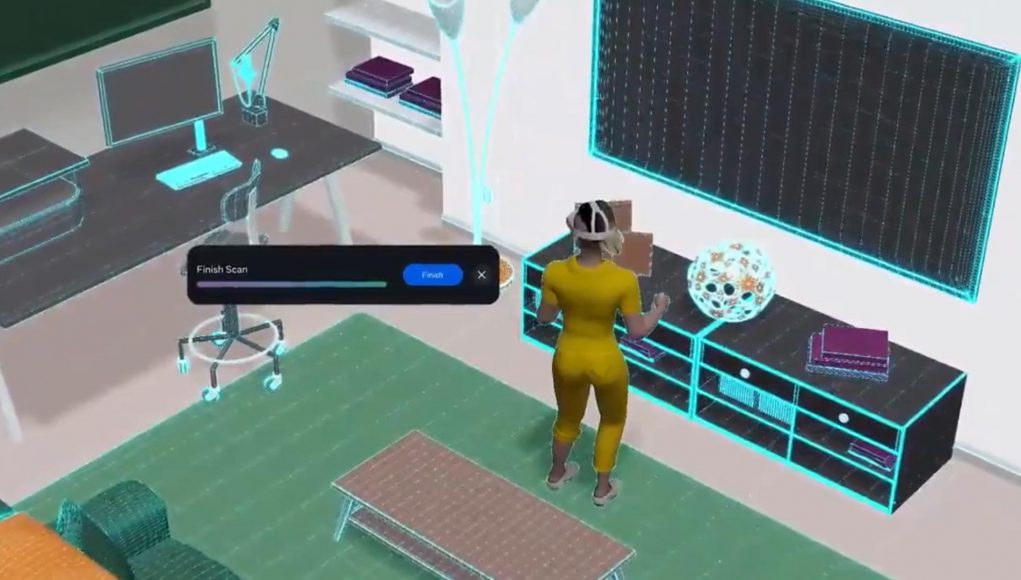Meta unveiled Quest 3 earlier this month, its upcoming standalone VR headset that not only promises to be thinner and more powerful than Quest 2, but also offer color passthrough for augmented reality. Now renowned dataminer ‘Samulia’ has uncovered what appears to be an early video of the headset’s ‘Smart Guardian’ feature in action.
Samulia published four videos showing off what seems to be a work-in-progress look at a new user experience (NUX) for Quest 3. The videos below seem to show how a new user might setup and use the headset’s guardian function, which is designed to keep users safe from bumping into objects.
The clips, which appear to be early prototypes, look similar to other videos which Meta includes in its headsets to explain basic functions, such as how to use hand-tracking, guardian setup, how to fit the headset for best comfort, etc. Here are those videos, courtesy Twitter user @Lunayian:
https://twitter.com/Lunayian/status/1667717804223610880
https://twitter.com/Lunayian/status/1667717805905526784
In the first two videos, it appears a user is using the headset’s inside-out sesnors to scan their playspace, which includes recognition of objects such as couches, coffee tables, desks, TVs, desktop computers, and decorative items—all of which seem to be recognized and individually meshed.
https://twitter.com/Lunayian/status/1667717807730032641
https://twitter.com/Lunayian/status/1667717809999101952
In the last two videos we see the Smart Guardian in action, which notifies the user of close-by objects. There also appears to be a primary workspace marking function similar to what we see on Quest 2 and Quest Pro in addition to a quick clip of the user playing with a ball in mixed reality, which notably accounts for the user’s furniture as play surfaces.
Meta hasn’t detailed its Smart Guardian system, a naming scheme first mentioned in a leaked roadmap which was allegedly presented by Mark Rabkin, Meta’s VP of VR. The company has however said Quest 3 will “seamlessly blend your physical world with the virtual one,” and that its system will be capable of “intelligently understanding and responding to objects in your physical space and allowing you to navigate that space in natural, intuitive ways that were nearly impossible before.”
Samulia also has a good track record of mining data from Quest firmware releases well before their official announcements. They’re credited with uncovering NUX video in 2021 showing off the first glimpse at Quest Pro in addition to extracting the Meta logo before it was officially unveiled at the company’s February 2022 pivot announcement.







